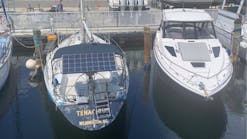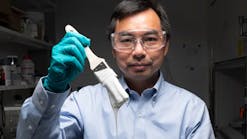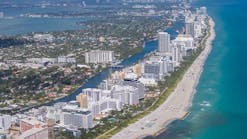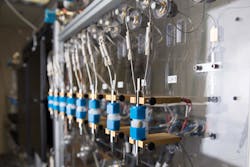It’s always nice to start a new year with good news!
On the Friday before Christmas, President Trump signed H.R. 1865, the appropriations bill that contains the 179D extension, into law. As a result, the commercial building energy efficiency tax deductions are extended retroactively from January 1, 2018, through December 31, 2020.
For those not familiar with it, Section 179D of the Internal Revenue Code was enacted as part of the Energy Policy Act of 2005 (EPAct 2005) to encourage energy efficiency in private-sector commercial and government-owned buildings. (For whatever reason, private non-profit owners were not included). It provided tax deductions of up to $1.80 per square foot for whole building performance, and there were partial deductions for improvements in the areas of lighting, HVAC, and building envelope. In the case of government buildings, the benefit was to be allocated to the primary designer on the project.
My very first Clark’s Remarks column, in June 2013, was in support of extending what was then the most recent extension and even expanding those benefits. Since then, I’ve written frequently about this program.
Elsewhere, another bit of good news was the Dec. 18 announcement by IBM Research that its researchers have developed a high-performance battery that doesn’t rely on heavy metals, such as cobalt and nickel. Past discussions in this column have pointed out that the embodied energy required to mine, process, and ultimately dispose of those heavy metals could, in the case of vehicle traction power, often result in a larger carbon footprint than that produced by a conventional fossil-fueled engine.
According to IBM, the new technology combines three proprietary materials, which they extracted from seawater, that have never before been used in battery construction.
With most auto manufacturers shifting their focus to electric vehicles, and cell phone use exploding, the need for a more sustainable battery technology is imperative. If IBM’s new design proves to be commercially feasible, the company that arguably brought us into the computer age (introducing the 650 and 700 mainframe computers in the early 1950s, and the PC in 1981) will have contributed a significant solution in the fight against our climate crisis.
Finally, our industry, since its inception, has been very concerned with thermal comfort. We have standards such as ASHRAE Std 55, and over the years thermal comfort has been a frequent topic in HPAC Engineering and in this column. With our high relative humidity levels here in South Florida, we especially recognize that our air conditioning systems need to control both sensible and latent heat loads. Now comes new research from Baylor College of Medicine and the University of Arizona, that by maintaining 30 to 60 percent RH in our offices (50 percent is a common target here in South Florida), occupants have lower stress responses and better sleep quality, to say nothing about their healthier hair and skin!
Best wishes for a healthy, happy… and comfortable New Year!
A regular contributor to HPAC Engineering and a member of its editorial advisory board, the author is a principal at Sustainable Performance Solutions LLC, a south Florida-based engineering firm focusing on energy and sustainability. He can be reached at [email protected].










